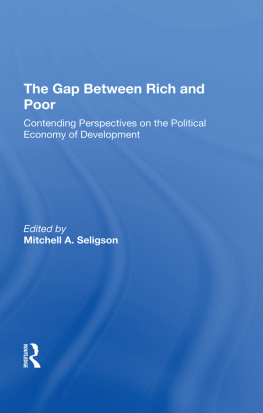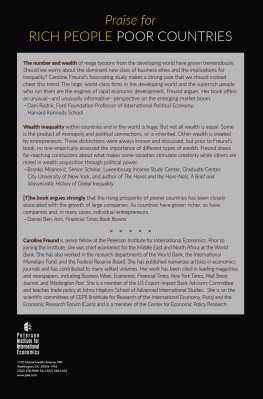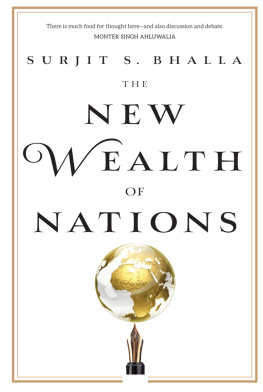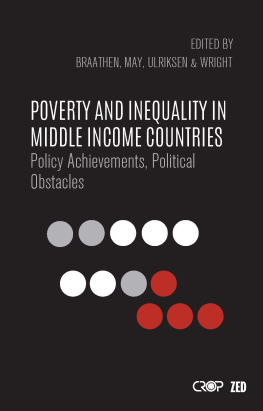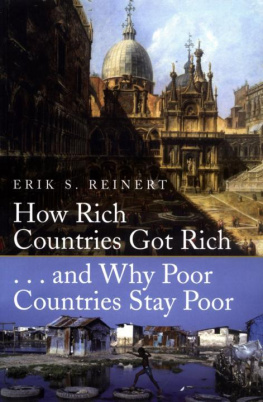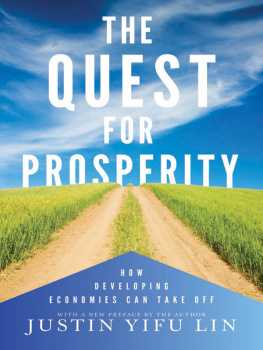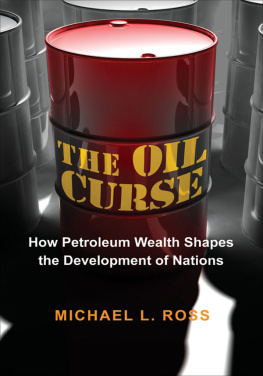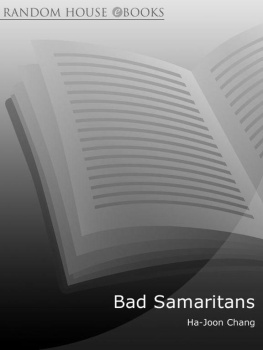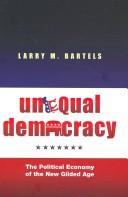The Gap between Rich and Poor
First published 1984 by Westview Press
Published 2019 by Routledge
52 Vanderbilt Avenue, New York, NY 10017
2 Park Square, Milton Park, Abingdon, Oxon OX14 4RN
Routledge is an imprint of the Taylor & Francis Group, an informa business
Copyright 1984 Taylor & Francis
All rights reserved. No part of this book may be reprinted or reproduced or utilised in any form or by any electronic, mechanical, or other means, now known or hereafter invented, including photocopying and recording, or in any information storage or retrieval system, without permission in writing from the publishers.
Notice:
Product or corporate names may be trademarks or registered trademarks, and are used only for identification and explanation without intent to infringe.
Library of Congress Cataloging in Publication Data
Main entry under title:
The Gap Between rich and poor.
Includes index.
1. Income distributionDeveloping countries
Addresses, essays, lectures. 2. Economic development
Addresses, essays, lectures. 3. International economic
relationsAddresses, essays, lectures. I. Seligson,
Mitchell A.
HC59.72.I5G36 1984 338.9 84-5113
ISBN 13: 978-0-367-29245-4 (hbk)
For Amber Lara Seligson, who, far more than most North American children, has had the opportunity to observe at first hand the gap between the rich and poor
Contents
PART 1
DEFINING THE GAP BETWEEN RICH AND POOR
, Mitchell A. Seligson
, David Morawetz
, Montek S. Ahluwalia
PART 2
CONTENDING EXPLANATIONS OF THE GAPS
, Simon Kuznets
, Henri Aujac
, David C. McClelland
, Alex Inkeles and David H. Smith
, Herman Kahn
, Alejandro Portes
, Michael Upon
, Theotonio dos Santos
, J. Samuel Valenzuela and Arturo Valenzuela
, Immanuel Wallerstein
, Tony Smith
PART 3
EMPIRICAL STUDIES: EVIDENCE MEETS THEORY
, Irma Adelman and Cynthia Taft Morris
, Richard Rubinson
, Volker Bornschier, Christopher Chase-Dunn, and Richard Rubinson
, Robert W. Jackman
, Erich Weede and Horst Tiefenbach
, Edward N. Muller
, William Loehr
, Gary S. Fields
, P. T. Bauer
Norman L. Hicks
PART 4
CASE STUDIES AND CONCLUSIONS
, John A. Booth
, John T. Smith
, Shirley W. Y. Kuo, Gustav Ranis, and John C. H. Fei
, Herman Kahn
, Mitchell A. Seligson.
Guide
Few residents of industrialized nations are not forcibly struck by the vast gap in wealth separating them from those who reside in the poor countries of the world. Whether they travel to those countries or visit them vicariously through television and film, the gap is probably the single most vivid impression that remains in their minds. There is a second gap, one that exists within the poor countries themselves, between the tiny affluent minority and the vast majority of the poor. This dichotomy can be observed in urban areas as well as in rural villages.
For the social scientist who has observed these gaps, two questions immediately arise. First, what causes the gaps? Second, are the gaps narrowing or widening? These two questions have concerned me since my earliest visits to Latin America, where I experienced these two gaps firsthand. This book is an attempt to provide the clearest answers that social science has been able to offer to date.
The book grew out of a graduate seminar I taught at the University of Arizona on the political economy of development. In preparing for the seminar while on sabbatical at the University of Essex in England, it became clear to me that there was a great deal of research addressing the two questions posed above, and I attempted to organize that material for my students. Although there were a number of collections that treated questions of political and economic development, none directly addressed the questions I sought to answer. In addition, the most recent theoretical and empirical research on dependency and world systems was generally absent from these volumes.
In the seminar, my students challenged me to refine my own thinking on the two questions and to probe more deeply the strengths and weaknesses of the existing research. They stimulated me to prepare this volume, which I hope will be of use in undergraduate and graduate courses alike in the fields of economics, political science, sociology, and history. I owe a deep debt of gratitude to those students: James Hansen, James Hawkins, Brian McConnell, Patricia Manning, Sylvia Adriana Pinal C., Francis W. Pumphrey, Marcy I. Rosin, Ral P. Saba, A. Houman Sadri, Mohammed Sahrifi, and John T. Smith. I also wish to acknowledge the contribution that my colleague Edward N. Muller has made to my thinking on this subject. We have spent many hours discussing the questions addressed in this book. Finally, I would like to thank the many authors and publishers who so kindly granted permission for their works to appear here.
Mitchell A. Seligson
Tegucigalpa, Honduras
Part 1
Defining the Gap between Rich and Poor
1.
The Dual Gaps: An Overview of Theory and Research
Mitchell A. Seligson
The income gap between rich and poor countries has grown dramatically over the past 30 years. In 1950, the average per capita income (in 1980 U.S. dollars) of low-income countries was $164, while the per capita income of the industrialized countries averaged $3,841, yielding an absolute income gap of $3,677. Thirty years later, in 1980, incomes in the poor countries had risen to an average of only $245, while those in the industrialized countries soared to $9,648; the absolute gap in 1980 stood at $9,403. For this period, then, there is clear evidence to support the old adage that the rich get richer. It is not true that the poor get poorer, but that would be a perverse way of looking at these data. A more realistic view of the increases in wealth in the poor countries would show that in this thirty-year period the poor countries increased their incomes by an average of only $2.70 a year, less than what an American might spend for lunch at a neighborhood fast-food stand. And in terms of relative wealth, the poor countries certainly did get poorer; the total income (gross national product or GNP) of the low-income countries declined from 4.3 percent of the income earned by the industrialized countries in 1950 to a mere 2.5 percent by 1980.
One might suspect that these data do not reflect the general pattern of growth found throughout the world, but are influenced by the disappointing performance of a few basket case nations. That suspicion is unfounded. The low-income countries comprise nearly half the worlds population; more than two billion people live in countries with incomes of less than $400 a year. It is also incorrect to speculate that because some poor countries have recently outperformed the growth rates of the industrialized countries that the gap will soon be narrowed. In Taiwan, where growth rates have been twice as high as in the industrialized countries, the gap has doubled.
There is another gap separating rich from poor: within many developing nations there is a growing internal gap between their own rich and poor citizens. Poor people who live in poor countries, therefore, are not only falling further behind the worlds rich, but are also falling further behind their relatively more affluent countrymen. Moreover, precisely the opposite phenomenon seems to be taking place within the richer countries, where the gap between rich and poor has been narrowing. The worlds poor, therefore, find themselves in a position of double jeopardy.

